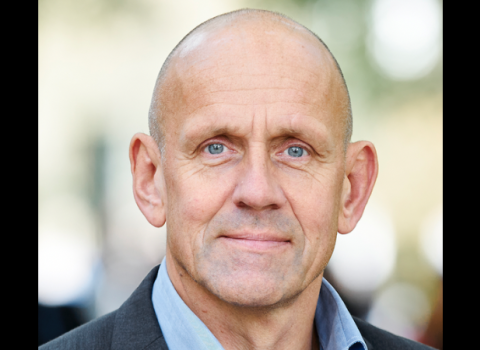It’s early days for full-scale quantum computers, but researchers claim there is an ‘immediate danger’ of Europe falling behind. ‘The heat is on - we have to react,’ says Jürgen Mlynek, chair of the project’s steering committee

The EU’s ten-year €1 billion quantum technologies research programme finally got off the ground with the first 20 projects, worth a collective €132 million, being announced at the official launch in Vienna on Monday.
The Quantum Technologies Flagship, announced in 2016, aims among other objectives to develop quantum computers that are exponentially more powerful than today’s supercomputers.
At the project launch, EU officials and researchers showcased 20 consortia, whittled down from 140 applicants, which will receive €132 million over three years.
The funding is divided among four categories: quantum computing; communication; simulation; and metrology and sensing. Half of the money is being put up by Brussels, the other half is expected to flow from member states.
Even with this new funding, Europe risks becoming a second-tier player in an increasingly important technology, delegates from government, industry and academia heard.
Over the past few years, scientists have delivered proof of principle for quantum machines, if only on a small scale. American tech giants are leading the pack, pumping huge amounts of money into computers that could one day make current models look like toys.
“You have Google, Microsoft, Intel and so forth putting hundreds of millions into the field. Nobody cares if they burn just 100 or 200 million euros, because they are sitting on piles of cash,” said Jürgen Mlynek, former president of the Helmholtz Association of German Research Centres and chair of the flagship’s steering committee.
The US Congress is considering a $1.3 billion quantum initiative. China has already made major investments in the field and is now building a US$10 billion National Laboratory for Quantum Information Sciences. “In China, money is really not an issue. You must be impressed at how strategically they act,” said Mlynek.
To date, no one has succeeded in building a commercial-scale computer that can harness the seemingly magical principles of quantum mechanics.
“But the heat is on. We have to react. I don’t see a company here [in Europe] willing to put hundreds of millions of euros into quantum computing,” Mlynek said.
It is a story that is being told repeatedly in the tech industry in Europe. On quantum software, Europe is very strong, said Tommaso Calarco, co-author of the ‘Quantum Manifesto’, which is the impetus behind the EU flagship, speaking to Science|Business. European companies such as MuQuans, ID Quantique, E2V and Thales are developing near-term applications in quantum sensing, metrology and cryptography.
While it is early days in the race to develop full-scale quantum machines, “There is an immediate danger of lagging behind in hardware,” said Calarco, a theoretical physicist at the Helmholtz Centre in Jülich, Germany. “The influence of hardware makers on the rest of the market is a very important point.”
The first quantum computer to surpass the capabilities of current silicon-based computers is still a decade or so away, researchers predict.
The aim is to harness qubits (quantum bits), which can exist in different states simultaneously. That means at any point in time, a qubit can either be a zero, a one, or both. This gives quantum machines a far larger number of possibilities than traditional zero-or-one bit computers, resulting in greater speed and power.
According to Calarco, Google is at the leading edge and is “the closest to creating a functioning computer, probably in the next year or two. IBM is not far behind,” he said.
While many labs across Europe are exploring quantum theory, the experimental work is happening almost exclusively in western Europe. The biggest investments are happening in Germany, with the federal government in August announcing a quantum initiative worth €650 million.
The labour pool in quantum computing is small, creating competition for qualified engineers and researchers. The prospect of American companies making acquisitions in Europe “is of course a concern,” said Calarco.
For researchers, the birth of the flagship has been painstakingly slow. Getting to the point of the first grant awards involved, “heavy, sometimes painful discussions,” said Mlynek. “The quantum community says we understand the direction to go; Brussels says, we pay the money, we understand the direction.”
Scientists in the UK were involved in the early preparations for the flagship and UK universities are involved in a number of the projects. Now though, the UK’s involvement post-Brexit is in some doubt.
Researchers expect the country will find a way to stay in the project by striking a deal like Switzerland, which pays to participate in EU research programmes. “I’m very confident they will continue with us,” said Calarco. The UK was an early mover on quantum technologies, launching a £270 million national programme in 2014.
Quantum proponents say the technology could transform financial markets, lead to massive improvements in cryptography and revolutionise artificial intelligence.
Cooperation with non-EU countries is a particularly thorny issue, given the potential of quantum computers to crack algorithms that guard the world’s most sensitive corporate and government data. “Foreign governments have approached us, [cooperation] has been discussed. There is not yet a clear strategy,” said Calarco.
Competition with missions?
The grants announced on Monday come from Horizon 2020 and will run for the next three years. In the battle for subsequent funding, the Quantum flagship could find itself in competition with a new funding instrument in favour in Brussels: missions.
The European Commission has floated the idea of basing a mission around the objective of building the first quantum computer. The issue is sensitive, with some fearing that a mission on quantum would eclipse the work of the quantum technologies flagship, and compete for funding.
“We need to be very careful [with missions]. We’re better with a broad plan,” said Wolf-Dieter Lukas, director of key technologies in Germany’s federal ministry of education and research.
Such a mission does not need to exclude the flagship, said Roberto Viola, the director-general of DG CONNECT in the European Commission.
It could involve an “intelligent division of labour,” agreed Heinz Fassmann, Austria’s minister for research and education, and current lead for member states on negotiations for the next EU research programme. “It’s not a competition between [the two]; one helps the other one.”
Don’t oversell
The Quantum technologies flagship is modelled on two similar EU initiatives: the graphene flagship, which is focusing on developing commercial applications of the remarkably strong and light material, and the human brain project, which aims to develop a computer model of all the processes in the brain.
The two previous flagships were selected in open competition. But with no formal competition for the quantum project, some scientists have felt isolated from the process.
Calarco says he’s aware that “We have some [unhappy] people who haven’t been funded. We need to keep the whole community together,” he said.
Perhaps because of the bumpy experience of the human brain project, which has been criticised by a large section of Europe’s neuroscientists for its comparatively small focus on cognitive sciences, quantum officials appear at pains to emphasise the funding available in their flagship for basic science projects.
There is also a noticeable effort to keep things low-key. “You can’t oversell it – if you do, and you don’t deliver, that’s no good for anyone,” said Mlynek.



 A unique international forum for public research organisations and companies to connect their external engagement with strategic interests around their R&D system.
A unique international forum for public research organisations and companies to connect their external engagement with strategic interests around their R&D system.